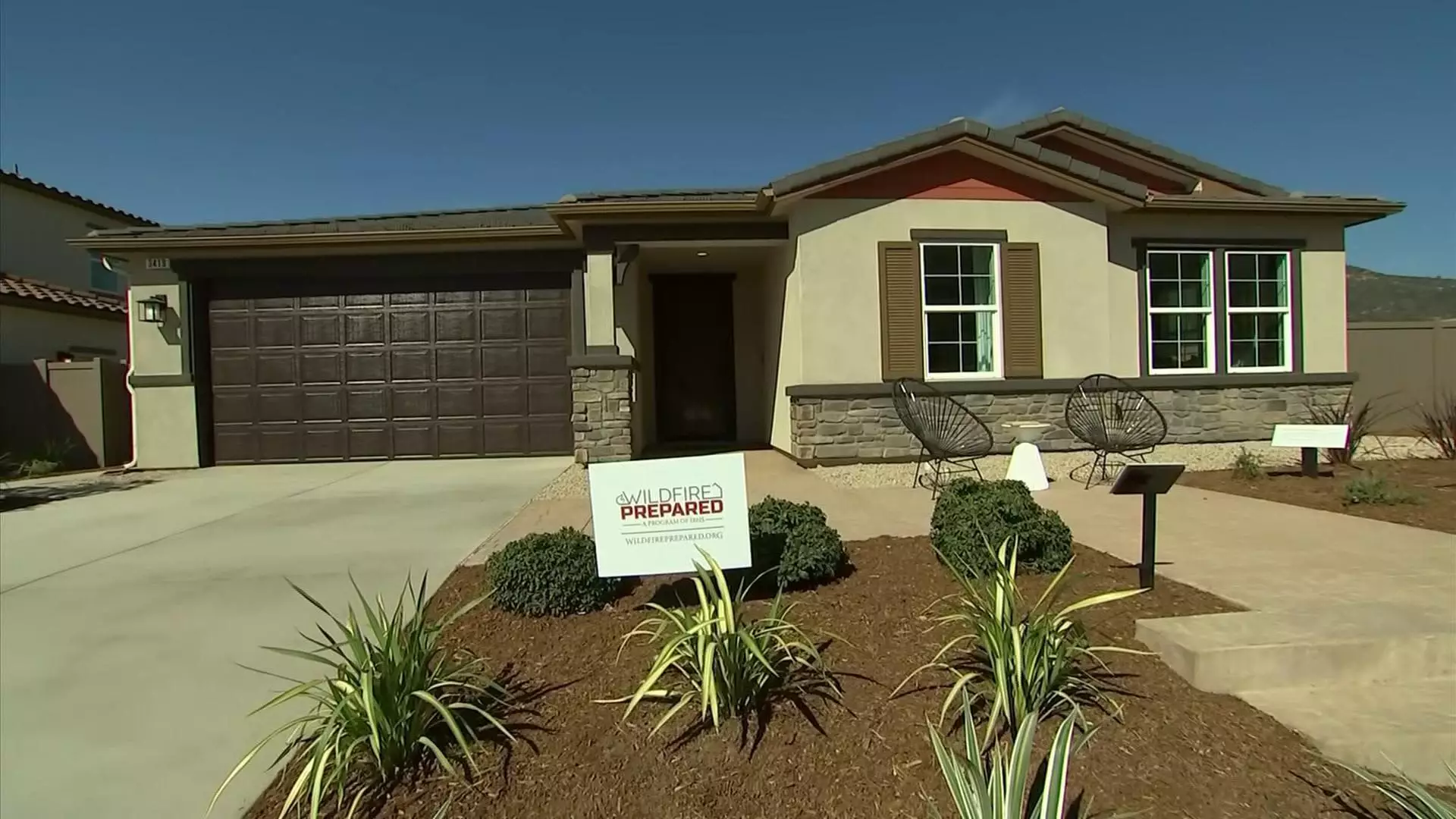In the aftermath of unprecedented wildfires that ravaged the Los Angeles area and other parts of California, KB Home is taking a bold step forward with its first “wildfire-resilient” community located in Escondido, a city just outside San Diego. With many homeowners still grappling with the emotional and material losses from the fires, KB Home’s initiative marks a significant shift in construction philosophy aimed at ensuring homes can withstand the growing threat of wildfires. The importance of this project is not merely academic; it comes at a time when current climatic conditions are pushing the boundaries of what’s considered safe and habitable, especially in regions frequently affected by such destructive forces.
Understanding the Innovation Behind Fire Resilience
The development will feature 64 single-family homes that adhere to have been constructed according to strict wildfire resilience standards set by the Insurance Institute for Business & Home Safety (IBHS). These standards focus on reducing vulnerability to the three primary sources of ignition during a fire—flying embers, flames, and radiant heat. Each home incorporates advanced features designed for maximum safety, including non-combustible siding materials like stucco and fiber cement, covered gutters to prevent ember intrusion, and tempered glass windows that can withstand extreme heat.
While such construction methods may seem costly or excessive to some, they represent a necessary evolution in homebuilding that acknowledges the increasing frequency and severity of wildfires due to climate change. If our infrastructure continues to reflect past misconceptions about fire risk, we can only expect devastating results. Homeowners should be able to live without the permanent worry that their residence is a tinder box waiting for the next wildfire to arrive.
The Cost of Safety: A Balancing Act
Steve Ruffner, the regional general manager of KB Home’s coastal division, acknowledges the challenges that come with incorporating these innovative designs into a fast-paced construction timeline. The company faced pressure to adapt its projects rapidly after recognizing the urgency of the situation. The resultant increase in costs is a topic of concern; while Ruffner refrains from disclosing specific numbers, he does mention that strategies to reduce costs are a critical part of the development process.
Given that these homes are priced in the range of $1 million to low millions—a rather expensive entry for many first-time buyers and move-up buyers—there’s a looming question about accessibility. Can we really call these homes solutions aimed at the general populace when they remain financially out of reach for so many? For it to be considered a true advancement in wildfire resilience, there needs to be an earnest effort to ensure affordability alongside safety.
The Bigger Picture: Building for a Fire-Resilient Future
What KB Home is attempting in Escondido is not merely a venture into profitable territory but rather an essential step towards changing the way we think about residential safety against natural disasters. Historically, California’s homebuilding practices have lagged behind advancements in safety technology, resulting in communities that are often ill-prepared for the next inevitable wildfire. By leading the charge on a larger scale, KB Home has a unique opportunity to serve as a template for other builders. The fire-resistant homes stand out not just on their own but as part of a more extensive movement towards sustainable, risk-aware living environments.
Despite commendable efforts, however, there remains a crucial caveat. Even with advances in fire-resistant construction, no home can ever truly be labeled fireproof. The reality is that homeowners and local governments must collaborate on broader strategies, which include effective landscaping and community planning, to maximize the chances of a home surviving a wildfire. Home financing should also consider resilience qualities, ensuring the insurance sector re-evaluates its retreat from California amidst soaring prices and competition.
Cultural Shifts and the Path Ahead
The current momentum toward fire-resilient homes could very well ignite a cultural shift in building standards across the country. With IBHS CEO Roy Wright noting that other builders may soon follow suit, this Escondido project could become a beacon of hope for communities across California and beyond. It’s critical to recognize the potential for such homes not just to survive but also to be insurable. As insurance companies pull back from high-risk areas, successfully marrying resilience with insurability will be paramount to fostering long-term stability within California’s housing market.
Ultimately, KB Home’s initiative opens the door for discussions on the standards we hold for safe living environments in the face of an ever-changing climate. By acknowledging that no risk is completely avoidable, we can push for more comprehensive strategies that prioritize the well-being of individuals and families who call these fire-resilient communities home. The design and construction of homes in fire-prone areas must rise to the occasion and reflect the realities of modern climate challenges.

Leave a Reply